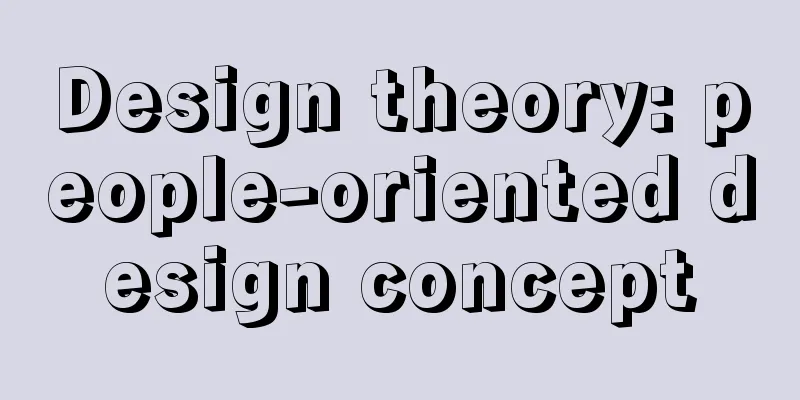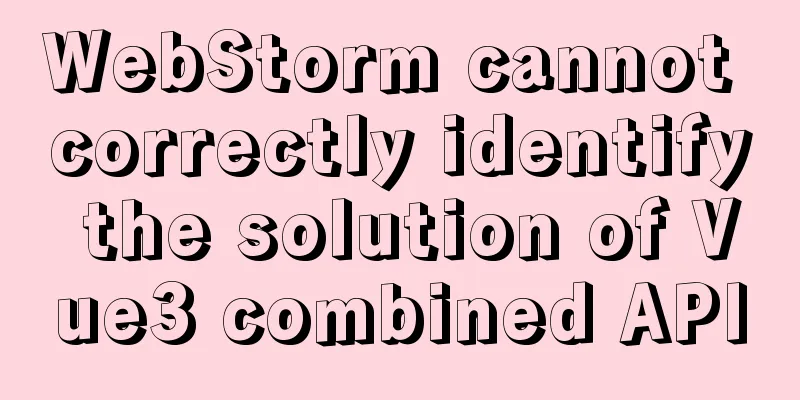Design theory: people-oriented design concept

|
<br />When thoughts were divided into East and West, "Zen" as one of the representatives of Eastern wisdom fascinated many people. People seek answers to life from the philosophy of Zen. The problem of life is to deal with various relationships: relationships with others, relationships with the world, and relationships with oneself. By constantly simplifying these relationships, "Zen" allows people to see a profound essence from the complex appearances, thereby understanding the impermanent nature of life, accepting this nature, and returning to the original nature of life and being calm and composed. In short, the Zen attitude towards dealing with existing relationships is subtraction. And what about design? Design is to actively create a relationship, a relationship between people and things, and even to create a relationship between people through this relationship between people and things. Therefore, on the surface, design is an “addition” to people’s lives. But this kind of "addition" can actually be done by borrowing some elements of "subtraction", so that the Eastern wisdom can leave more graceful and smooth words in the term "design" of "industrial design" initiated by the West, which can make people smile. Are you "designing" or "framing" someone? The "user-centric" idea has been advocated for a long time, and meeting user needs has become the supreme goal and motivation. But must the needs of users be met? It is not just about the budget of commercial design operating costs, but about considering users as people just like us: Do all needs really have to be met? Among the needs theories, Maslow's hierarchy is probably the most famous. But what I want to talk about here in particular are some of people’s negative needs called “desires”. Lao Tzu said that he couldn't stand people who used clever machines. He felt that these complicated instruments made people "scheming", thus increasing the number of cunning and treacherous people. In fact, people's conspiracies and cunning are just projected by these objects. However, in software and network design, because the tools are flexible and simple, the cost is particularly low and the opportunities for experimentation are particularly high, a variety of designs emerge. Everyone holds the banner of "user-centric" because they do want to obtain commercial value from users, but it does not necessarily start from the users' real needs. The level of interpersonal trust on the Internet is very poor. Could it be caused by a single website overnight? Trojans, viruses, and advertising traps that look like programs everywhere, who hasn’t been fooled and suffered losses? As for pornographic websites, they are typically "designed" to satisfy "desires". In Chinese, "design" means "laying a trap", "designing to trap an honest person". Are we, the designers, “designing” and “trapping” people? Seize the user's weakness and then defeat him? From "people-oriented" to "better people-oriented" For a period of time, design flourished because of the Industrial Revolution. There was a time when people were dazzled by the efficiency of machines. They worked hard to worship the machines and adapt themselves to them. Finally, because many people collapsed, everyone realized that the machines were designed by ourselves. How can we adapt ourselves to the things we created instead of letting the things adapt to us? We can design, but there is very little we can change ourselves! So we entered the "people-oriented" stage. However, “people-oriented” seems to be insufficient, because as mentioned earlier, not all human needs must be met. Why do many religions emphasize abstinence? Because people's control over their desires is the guarantee that they can truly obtain happiness. People must become their own masters so that they will not let their desires become their masters. So our goal is to "focus on making people better", which actually means "focusing on helping people grow in a healthy way" and making them "become better people". In this age where machines and man-made objects outnumber humans, why are we becoming increasingly lonely and alienated? In "The Art of Loving", Fromm believes that: "... modern man is alienated from himself, his peers, and nature. He becomes a commodity... The relationship between people is essentially strangers to each other, a relationship between automatic machines..." I agree with this. At the same time, I also feel that we lose ourselves in the things we design. We forget that we created these things, and that we are much more spiritual beings, humans. We should inject our aura into the design of these objects, rather than losing our own aura in front of them and treating ourselves as "machines" to be disassembled and refurbished to meet some so-called "needs." Knowing Ourselves <br />Here we come back to “Zen”, the wisdom of using “subtraction” to make us more human. We cannot stop the birth of some bad designs in the world, just as the buildings that have truly left a mark in people's memories of emotion and admiration are so limited throughout history. In our time, although there are countless design practitioners and countless new pages are constantly being activated and born on the Internet every day, truly great designs will still be limited. Because these design works are projections of the designer's mind, only those designers who abandon complexity and truly solve the three relationships better can create works that make people smile. If Chinese design has the characteristic of "cleverness", then one of its outstanding representatives is the Chinese characters we use in our daily life. You can observe carefully how exquisite, practical and spiritual this symbol is. Maybe you will say, doesn’t “Zen” mean that everything should be abandoned? Why do we still need to design? I think that the design activity itself is a process of meditation and enlightenment, and also a process of learning to deal with the three relationships mentioned above. From "people adapting to machines" to "machines adapting to people", while we are using machines to explore our own cognition and behavioral fields, we are also exploring our relationship with ourselves, because "machines" are a projection of our cognition and they represent a part of us. How do we get along with the parts of ourselves? How we arrange this relationship is how we "design" the "human-computer interface". To sum up, I don’t think I want to rigidly link two unrelated things together, but I hope to express that in the relationship between people and things, we project our own thoughts on the relationship between people. Given that the handling of these relationships is ultimately to solve life’s problems, good design should help us think about solving these problems. We have the confidence to believe that the idea of "Zen" can help us go further in Chinese style design. |
<<: How to set the memory size of Docker tomcat
>>: Why is it not recommended to use index as the key attribute value in Vue?
Recommend
Detailed steps for embedding Baidu Maps in web pages and using Baidu Maps API to customize maps
Insert Baidu Map into the web page If you want to...
Solution to the error when calling yum in docker container
When executing yum in dockerfile or in the contai...
Detailed explanation of routing parameter passing and cross-component parameter passing in Vue
Route Jump this.$router.push('/course'); ...
JavaScript canvas realizes dynamic point and line effect
This article shares the specific code for JavaScr...
Solution to the timeout problem when installing docker-compose with PIP
1: Installation command pip install docker-compos...
Detailed explanation of MySQL alter ignore syntax
When I was at work today, the business side asked...
JavaScript implements H5 gold coin function (example code)
Today I made a Spring Festival gold coin red enve...
Gitlab practical tutorial uses git config for related configuration operations
This article introduces the content related to gi...
How to deploy Vue project under nginx
Today I will use the server nginx, and I also nee...
Tomcat multi-port domain name access and configuration to enable gzip compression method
1. In addition to the default port 8080, we try t...
Key points for writing content of HTML web page META tags
The META tag is an auxiliary tag in the head area...
JSONP cross-domain simulation Baidu search
Table of contents 1. What is JSONP 2. JSONP cross...
Detailed View of Hidden Columns in MySQL
Table of contents 1. Primary key exists 2. No pri...
Example of how to set automatic creation time and modification time in mysql
This article describes how to set the automatic c...
MySQL Community Server 8.0.12 installation and configuration method graphic tutorial
MySQL 8 brings a brand new experience, such as su...









